When asked by SCD to do a short article on photographing vintage racing events, I, for some reason, now long forgotten, said yes.
What could I say that readers would find of value or interest? After several dry runs, this is my answer:
“Take a number of images captured at Laguna Seca, Sears Point, and ThunderHill, include a few paddock detail images, a few driver portraits, polish the images off with a brief description of the why and how.”
The goal? To get our readers excited about capturing images at the track.

If you’re looking for instructions on setting up your camera, I’ll suggest you visit Steve Perry’s Backcountry Gallery. His website will guide you through the jungle of Nikon controls. My goal, getting you looking at corners, sunlight, moving cars, then use that vision to capture interesting images.
What do I consider a Sports Car Digest image? As you, the reader, scrolls through a Sports Car Digest story, the image needs to stop you cold. The reader needs to get into the image, look at the driver’s eyes, check out the tires as they contact the pavement, think, “ Damn, wish that was me pushing that machine!!”
Unfortunately, not all my images published from an event make that cut. Never the less that’s my target.

Couple of hints to keep your weekend fun. Know the track, arrive a day early to a new track, walk both the inside and outside of the track. Keep in mind the backgrounds. Nothing like a pile of old tires or a collection of porta potties to ruin an otherwise nice image.
Keep your equipment to a minimum. Hauling two bodies, six lenses, and a bag full of “whatever” up the hill from Laguna’s turn six to The Corkscrew Sunday afternoon after three or four days of shooting will show how important packing light can be. By Saturday afternoon, I need a monopod to support my camera and long lens. Keep in mind you need strong, smooth support to pan at a slow shutter speed, and a monopod might be helpful no matter your age.
Sunblock, wide brim hat, a bottle or two of water, an easily removed jacket, shoes that grip and won’t dump you on your can. A decent bottle of wine back in the hotel room to help with editing.

Spend some time establishing the qualifications for a press/media credential from the track. Media credentials will simplify life. Note: Some sixty years ago, my first media credential was a pair of wire cutters.
Do you understand and know about the Exposure Triangle? You need to know and understand the Exposure Triangle. A good article to get you started is B&H Understanding Exposure, Part 1: The Exposure Triangle. Once you understand the Triangle, your photographic life will smooth out.
I am a Nikon shooter and updated to a z7 Mirrorless System. Any camera references are based on my Nikon camera experiences.
I set my z7 Nikon up this way:
ISO is set automatically by the camera. Why not? The z7 and, for that matter, any Nikon is faster than I am and more accurate in setting the ISO to match the shutter and f stop. I use the manual setting. I use the f Stop to set the depth of field and shutter speed to control motion or movement in my images.

One rule to live by “Capture one image each day at the track that will enhance your portfolio.”
On to twenty-seven images. Twenty-five from Laguna Seca, one from Sonoma Sears Point, and also from ThunderHill. Each image has Camera Data to give you an idea of the how and why of my shooting. I have included ‘Notes’ where I thought they might help explain the process.
The last is a list of camera gear I’ll be taking to the tracks in 2021.
27 Vintage Car Racing Images with Tips to Capture the Moment
Image 1. Blower Bentley

Track: Monterey Laguna Seca
- Location: Turn 2
- Camera: Nikon
- Lens: f3.5/5.6 200/500mm – set to 200mm – Polarizing filter
- ISO: 1600
- Shutter Speed: 1/250 second
- Aperture: f/10
- Monopod: Yes
Image Notes:
I wanted to capture the driver’s face/eyes as he pushed back in his seat as this big Bentley exits out of turn two. Monterey Sunshine (Fog) smooths out the car’s contours and helps the dark green pop from the background. There are several shooting holes in the turn two fences to help vary the background and the attitude of the car.
Image 2: Ferrari F1

Track: Monterey Laguna Seca
- Location: Turn 2
- Camera: Nikon
- Lens: f3.5/5.6 200/500mm – set to 200mm – Polarizing filter
- ISO: 140
- Shutter Speed: 1/160 second
- Aperture: f/9
- Monopod: Yes
Image Notes:
Rule No.1 of vintage race photography. A vintage Ferrari always sets an impact and makes an interesting image. An F1 vintage Ferrari even more so.
Image 3: Steve Schmidt

Track: Monterey Laguna Seca
- Location: Hot Pits
- Camera: Nikon
- Lens: f2.8 70/200 set to 135mm
- ISO: 200
- Shutter Speed: 1/250 second
- Aperture: f5.6
- Monopod: No
Image Notes:
Steve Schmidt waits to take his 935 onto the track. This is the best time to shoot candid images. The drivers are concentrating on what is ahead on the track and often don’t see you. If they notice your lens pointing at them, they may give you a “Hard Look,” making for a nice portrait.
Image 4. 250F Maserati

Track: Monterey Laguna Seca
- Location: Approaching turn six
- Camera: Nikon
- Lens: f.35/5.6 200/500 – Polarizing filter
- ISO: 360
- Shutter Speed: 1/500 second
- Aperture: f8
- Monopod: Yes
Image Notes:
The track goes up the hill from turn five under an overpass and over a rise, dropping to turn six. This 250F Maserati is just cresting the rise just past the overpass with early morning side light lighting the driver’s face.
I choose the long 500mm setting to separate the car from the trees across the valley. The 1/500 second shutter speed to stop the car and hold the detail but still let the tires show some motion. I had the focus curser set on the driver’s face to maintain the sharpness of his features.
Image 5. Chevron #8

Track: Sears Point Sonoma
- Location: Turn ten
- Camera: Nikon
- Lens: 3.5/5.6 200/500 mm – Polarizing filter
- ISO: 1400
- Shutter Speed: 1/400 second
- Aperture: f8
- Monopod: Yes
Image Notes:
Late afternoon backlight. Here the car is flat across the track with the camera perhaps a little too high for maximum impact.
Image 6. McLaren Can-Am

Track: Laguna Seca Monterey
- Location: Over the hill approaching turn 6
- Camera: Nikon
- Lens: f4 400
- ISO: 400
- Shutter Speed: 1/800 second
- Aperture: f11
- Monopod: Yes
Image Notes:
This McLaren Can-Am is captured at mid-day. Even mid-day, if your careful and plan out your images, you can capture interesting light on the right cars. Can-Am cars have so many curves and planes that they often excel in the worst of light. Notice how different the light is between this image #6 and the Maserati 250F image #4.
Image 7. BMW 3.5 CSL engine

Track: Laguna Seca Monterey
- Location: Paddock
- Camera: Nikon
- Lens: f1.4 50mm
- ISO: 250
- Shutter Speed: 1/250
- Aperture: f11
- Monopod: Handheld
Image Notes:
Keep looking for that unique paddock image. After I took this image, I stood talking to the car’s crew chief for thirty minutes or so. Not one person raised their camera to get an image of this piece of art.
Image 8. HWM Formula Car

Track: Laguna Seca
- Location: Turn two
- Camera: Nikon
- Lens: 3.5/5.6 200/500mm with a polarizing filter
- Racked to 500mm
- ISO: 6400
- Shutter Speed: 1/750 second
- Aperture: f10
- Monopod: yes
Image Notes:
The fog is clearing, leaving a soft, overcast light. I wanted to compress cars with the front driver sharp and others falling into soft focus. When viewing a full-frame hi-res file of this image, you can see the threads on the front suspension bolts.
Image 9. Shadow F1

Track: Laguna Seca
- Location: turn 2
- Camera: Nikon
- Lens: 3.5/5.6 200/500mm with a polarizing filter.
- Racked to: 200mm
- ISO: 100
- Shutter Speed: 1/100 second
- Aperture: f9
- Monopod: yes
Image Notes:
“Slow” shutter speed to capture the speed/motion of the Masters F1 cars. Oversteering as he exits turn two. The front tires are turned into the camera—soft, overcast light. Keeping the focus curser on the driver’s helmet kept him sharp with nose and tail blueing from the speed.
Image 10. Penske MARCH F1

Track: Laguna Seca
- Location: Turn 2
- Camera: Nikon
- Lens: f3.5/5.6 200/500mm
- Racked to: 200mm
- ISO: 280
- Shutter Speed: 1/250 second
- Aperture: f9
- Monopod: yes
Image Notes:
Here motion comes from a “Cross Pan” the car in front is going from left to right, so the pan is going left to right following the car, The car in the back is moving right to the left against the pan, building its speed blur even though the shutter speed is set at a moderate fast 1/250 second. Again a late day soft light to build detail in the car.
Image 11. MARCH F1

Track: Laguna Seca
- Location: Turn 2
- Camera: Nikon
- Lens: f2.8 70/200mm with a polarizing filter
- Racked out to 170mm
- ISO: 180
- Shutter Speed: 1/80 second
- Aperture: f11
- Monopod: yes
Image Notes:
I spent some time establishing the background and discovering how it would play out in the early afternoon light with a soft overcast to smooth out the shadows. The slower shutter speed tends to combine the texture/colors of the background into one smooth surface. The same happens with the reflections off the track’s pavement.
Image 12. Porsche 935

Track: Laguna Seca
- Location: Turn 5
- Camera: Nikon
- Lens: f3.5/5.6 200/500mm with a polarizing filter.
- Racked out to 200mm
- ISO: 100
- Shutter Speed: 1/125 second
- Aperture: f6.7
- Monopod: yes
Image Notes:
Turn five with early afternoon light. Bright colors but no shape or just a little shape from the light. The best about turn five until the late afternoon light is you can stand under the oaks in the shade—an important consideration in August. Camera placement goes from just a nudge high as this image shows to higher by moving camera placement left and slightly lower camera placement to the right.
Image 13. Alfa Romeo

Track: Laguna Seca
- Location: Turn 5
- Camera: Nikon
- Lens: f3.5/5.6 200/500mm with a polarizing filter
- Racked out to: 310mm
- ISO: 400
- Shutter Speed: 1/180 second
- Aperture: f10
- Monopod: yes
Image Notes:
The same turn, turn five. The camera placement is lower, and the 5:10 PM warm sun is beginning to set off to the camera left and slightly behind the car. Like most tracks in the west, Laguna has sunlight that warms substantially as it sets in the summer. It is a real contrast between the fog/overcast light of some days and the warm setting light of other days. Look for ways to optimize your image with the available light.
Image 14. 962 Porsche

Track: Laguna Seca
- Location: Turn 5
- Camera: Nikon
- Lens: f3.5/5.6 200/500mm
- Racked out to 200mm
- ISO: 400
- Shutter Speed: 1/180 second
- Aperture: f10
- Monopod: yes
Image Notes:
A wider crop to give an idea of the location. Just off to camera left behind the second 962 is a collection of the infamous laguna Porta Potties. One remains partially visible in the image. Warm 5:20 PM light off to camera left. The shadows and high lights give shape to the 962. The slower shutter speed holds the nose sharp with growing blur towards the rear. The second 962 has even more blur from his movement camera right to left as I am panning left to right. A polarizing filter to clear the highlights off the windshield intensifies the car’s red, along with the background and pavement.
Image 15. Lancia D50 F1

Track: Laguna Seca
- Location: Turn 5
- Camera: Nikon
- Lens: f3.5/5.6 200/500mm with a polarizing filter
- Racked out to: 200mm
- ISO: 450
- Shutter Speed: 1/250 second
- Aperture: f11
- Monopod: yes
Image Notes:
This next image is a reason to stand out in Laguna’s sun, fog, or rain all day waiting for the magic. A Lancia D50 drifting through Laguna’s turn five then accelerating up the thill towards turn six is magic.
I wanted some background blur combined with heavy sharp car detail with rotating wheels and tires. Captured a few minutes past 4PM. Too early for dramatic warm light.
Image 16. Porsche 962

Track: Laguna Seca
- Location: Turn 5
- Camera: Nikon
- Lens: f3.5/5.6 200/500mm with a polarizing filter
- Racked out to: 400mm
- ISO: 400
- Shutter Speed: 1/250 second
- Aperture: f9
- Monopod: yes
Image Notes:
Three 962 Porsches stack up in turn five. Keep looking for turns that will let you capture multiple cars from nose to tail with a bit of shape. Shadows from the afternoon sun lend shape to the cars.
Image 17. Sadler Mk IV

Track: Laguna Seca
- Location: Turn two
- Camera: Nikon
- Lens: f3.5/5.6 200/500mm with a polarizing filter
- Racked out to 500mm
- ISO: 6400
- Shutter Speed: 1/750 second
- Aperture: f16
- Monopod: yes
Image Notes:
Know the track and know the cars. Where and when possible, scout the track and find a corner that will accent the car. Laguna’s turn two accents this Sadler Mk4 three-wheeling as the driver shifts into third. And of course, I am looking to see the driver’s face. Overcast and fog help as the drivers often do not wear a dark helmet shield or sunglasses, highlighting their eyes.
Image 18. MARCH F1

Track: Laguna Seca
- Location: Turn five
- Camera: Nikon
- Lens: f3.5/5.6 200/500 mm with a polarizing filter
- Racked out to 200mm
- ISO: 450
- Shutter Speed: 1/320 second
- Aperture: f9
- Monopod: yes
Image Notes:
I am the Masters Series photographer for US West Coast events. Here I wanted to show the intense up-close racing of these F1 cars. Captured later in the day just as the sun starts to drop behind the hills to the southwest end of the track. Again the driver’s eyes make the image.
Image 19. 2 Liter Sports Racers

- Camera: Nikon
- Racked out to 480mm
- ISO: 1600
- Shutter Speed: 1/750 seconds
- Aperture: f9
- Monopod: yes
Image Notes:
An example of stacking cars to build impact. The 480mm lens compresses the distance between the cars, adding impact. Nikon D850 f3.5/5.6 200/500mm racked out to 480mm at f9.5 1/750 second. A polarizing filter and a monopod were used. The early morning warm light was enhanced by the wildfires surrounding the Monterey area this year. Very yellow light from the heavy ash.
Image 20. BMW Tii

Track: Laguna Seca
- Location: Turn 2
- Camera: Nikon
- Lens: f3.5/5.6 200/500mm with a polarizing filter
- Racked out to 360mm
- ISO: 1600
- Shutter Speed: 1/500 second
- Aperture: f8
- Monopod: yes
Image Notes:
Compress the cars with a long lens, not stoped down too far, focus on the second or third driver letting everything in front or behind go soft. Use a polarizing filter to open up the windshield and clean off the reflections. I used a faster shutter speed to sharpen the driver and an open f stop to soften the surrounding image.
Image 21. Martin Lauber

Track: Laguna Seca
- Location: Hot pits
- Camera: Nikon
- Lens:f1.8 85mm
- Racked out to:
- ISO: 200
- Shutter Speed: 1/200 second
- Aperture: f1.8
- Monopod: yes
Image Notes:
Keep looking for those images that others do not see. You are in the Hot Pits, a location not often visited. What do you see that spectators don’t from the other side of The Fence? This is a portrait of Martin Lauber in his F1 as he sits in the Hot Pits. The dark background is his crew chief standing beside him. Using autofocus and auto ISO, then if your shooting Eyes pre-set your f stop to wide open and your shutter to 1/200 or 1/250. Use a 50mm to a 200mm lens to capture the images. The same setup goes for a mechanic’s hands adjusting Webbers or detail images of front suspension pieces. Get down low to place your camera even with the driver’s eye. Just don’t lose track of where you are and let some driver late for his practice run over you.
22. Hands

Track: Laguna Seca
- Location: Paddock
- Camera: Nikon
- Lens: f 1.4 50mm
- Racked out to:
- ISO: 200
- Shutter Speed: 1/400 second
- Aperture: f1.4
- Monopod: yes
Image Notes:
Detail of mechanics hands rebuilding the electronics on a Maserati 250F.
Image 23. 356 and 300SL

Track: Laguna Seca
- Location: The Corkscrew
- Camera: Nikon
- Lens: f2.8 70/200mm
- Racked out to:
- ISO: 1250
- Shutter Speed: 1/400 second
- Aperture: f10
- Monopod: yes
Image Notes:
Two-period correct cars in The Corkscrew. This 356 and 300SL could have and may have raced against each other in the day. Always nice to get cars that “may have” in the day. The Corkscrew is so steep here that even though my camera and I are even with the 356, the 300SL is above me giving depth to the image. With the two cars being German Silver and so much of the image gray pavement, the only real color is the yellow 356 headlights and the red/white bumper stripes with green run-off. Be aware of background colors that can enhance an image.
Image 24. Piccolo Maserati 250F Exhaust

Track: Laguna Seca
- Location: Paddock
- Camera: Nikon
- Lens: f4 300mm
- Racked out to:
- ISO: 800
- Shutter Speed: 1/400 second
- Aperture: f5
- Monopod: yes
Image Notes:
Paddock. Maserati F250 exhausts detail. You’re walking around the paddock, keep looking for images that most people don’t see, even if they are standing next to you as you capture an image. Get down on your knees and look low. Shallow depth of field or deep depth of field? Another reason to have a monopod is it’s a hell of a lot less embarrassing to use a monopod to get up off your knees than to ask some spectator, driver, or mechanic to help you up.
Image 25. Porsche RS Spyder

Track: ThunderHill
- Location: Top of the hill across from the paddock.
- Camera: Nikon
- Lens: f1.4 50mm with a polarizing filter
- Racked out to:
- ISO: 80
- Shutter Speed: 1/100 second
- Aperture: f9
- Monopod: Hand held.
Image Notes:
This image was captured at ThunderHill during a private test day; I was on top of the hill kneeling on the track pavement when this Spyder popped over the edge. He was in the mid-eighties as he went past me. He and I were the only two on the track. It is sometimes good to know your driver and have confidence in his ability.
I had six laps total to capture this Spyder’s image and choose to shoot faster for the first three laps to ensure an image, then adjust slower for the last three laps. The reason I was on my knees was to see under the mirrors at the driver.
Image 26. Porsche RSK

Track: Laguna Seca
- Location: Turn 2
- Camera: Nikon
- Lens: f2.8 70/200mm with a polarizing filter
- Racked out to 135mm
- ISO: 720
- Shutter Speed: 1/250 second
- Aperture: f9
- Monopod: yes
Image Notes:
This one was captured in the late afternoon. The sun is below the hills to the tracks West accenting the horizon line along the side of the RSKs. I planned this image by going through the group run times and picking the corner I thought would work best with these early Porsches and this light. 3/4 Front view of the lead RSK, so I used a faster shutter speed to hold detail.
Image 27. McLaren F1

Track: Laguna Seca
- Location: Turn 5
- Camera: Nikon
- Lens: f2.8 70/200 with a polarizing filter
- Racked out to: 200mm
- ISO: 400
- Shutter Speed: 1/320 second
- Aperture: f9
- Monopod: yes
Image Notes:
A bit creative. I wanted the backlight to turn the pavement and runoff gravel to a silver. The cars to be outlined but still have detail in the shadows. You can see the driver’s eyes.
Tips for Capturing Great Shots
- Keep looking for other photographers; if there are another two or three shooters, move on. Photographers often travel in packs and, at the end of the day wondering why all their images look alike.
- Fog, overcast, rain, late-day sun, early day sun all give you a chance to capture a unique image.
- Set your camera to M. Set your f stop to get the depth of field you want and the shutter speed to get the motion you want. ISO is set to Auto. Keep track of your ISO so that your images are not overcome with high ISO noise. Concentrate on your image, not camera settings.
- What does your background look like? Does the texture enhance your image? Ugly signs? Porta-potties?
- Go up the hill so you are looking down into the car?
- Which camera placement will let you capture a row of cars at speed setting up for a turn.
- Use a good polarizing filter to intensify background colors, pavement color, and remove reflections from the windshield, allowing the viewer to see the driver. Some cars use a “plastic” windshield that may give you an intense purple or pink color when using a polarizing filter.
Panning Tips
In photography, panning means swiveling a still camera horizontally from a fixed position.
For our use, it means to follow a car through the arc of a turn keeping the center or focus cursor on the same point of the car.
As an example, you place the cursor on the driver’s helmet as he/she first enters the turn, and using Follow Focus to maintain focus, you pan the camera keeping the focus curser on the driver’s helmet. Because the camera is panning/swiveling at the same speed as the car, you mimic a still image. This allows you to capture a sharp image with a much slower shutter speed. Only the area being followed by the curser will be sharp other areas will blur from the motion.
All this, “keep looking” for that unusual image. Remember that these are fast, powerful cars, for the most part being driven by o’l men and women who may not see you, especially if you’re in an unexpected location capturing that image of the weekend. Please don’t count on them seeing you. Stay alert.
This may be a good time to point out I am not putting together a direction manual on How to Photograph Vintage Race cars.
Rather I want to show you examples of how I approach a vintage event. What lens combined with what f stop at what shutter speed and what time of day produces a given image? How does light affect the image?
Hopefully, you will read the captions combined with the Notes and arrive at a starting place for your photography. Two items should be clear to you:
- Understand the Exposure Triangle
- Spend time practicing your panning technique.
Any questions grab me at a track or email [email protected]
Equipment list.
Z 7 Nikon body
f4 24/70mm Mirrorless lens.
F1.8 85mm Mirrorless lens
F.2.8 70/200mm Mirrorless lens
1.4TX for a z7
F5.6 200/500mm Nikon lens
Z Camera adapter to standard Nikon lenses
Three camera batteries-all freshly charged.
Battery charger
Six 64GB XQD Cards
Card reader
Various USB cords
Ear plugs
Extension cord for the hotel room
Dozen ThinkTank Red Whips
MonoPod with a simple ball head
Extra quick release pads for ball head
ThinkTank AirPort roller bag
ThinkTank Retrospective 30 shoulder bag
Various rain covers for camera, lens and bags
MackBook Pro 13 inch lap top for hotel editing
Two 5TB External hard drives
iPad
iPhone
Minimum four bottles of decent red wine
Corkscrew
Three $100.00 bills to be used in emergencies only
Media credentials
[Photo credit: Dennis Gray]


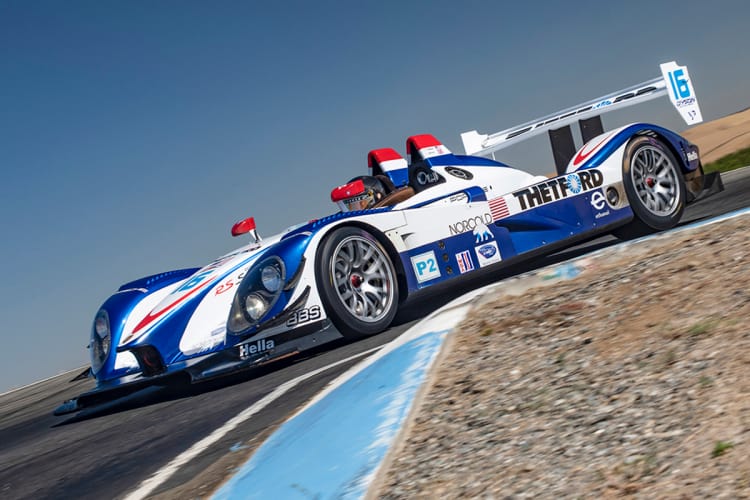


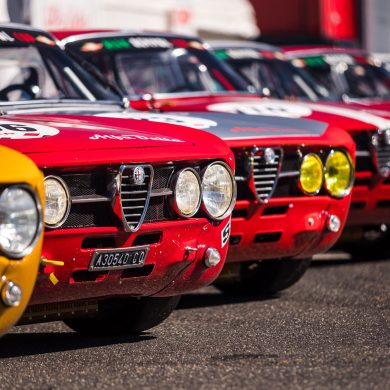
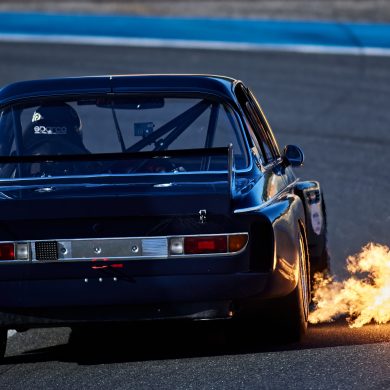
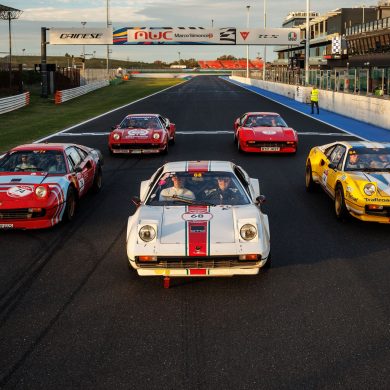
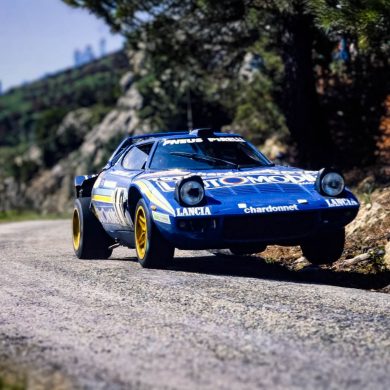


Excellent, detailed information. Many thanks!
Thanks, Dennis! I’m still benefiting from your course about six years ago. Here’s a (full) frame from VIR this past Fall. 1/50, f/22, ISO 200. 200mm
Thanks for the refresher course. Hope to see you at Sonoma in April!
Nice article and images Dennis. Thanks for sharing some helpful hints. There are a few types in there that I’ve always struggled with creating myself. The mid-traffic capture is an example where I tend to struggle.
Great article! Very helpful!
This is such a great article! Thanks for taking the time to share your expertise! The photo information and notes are truly worth a lot. Much appreciated!